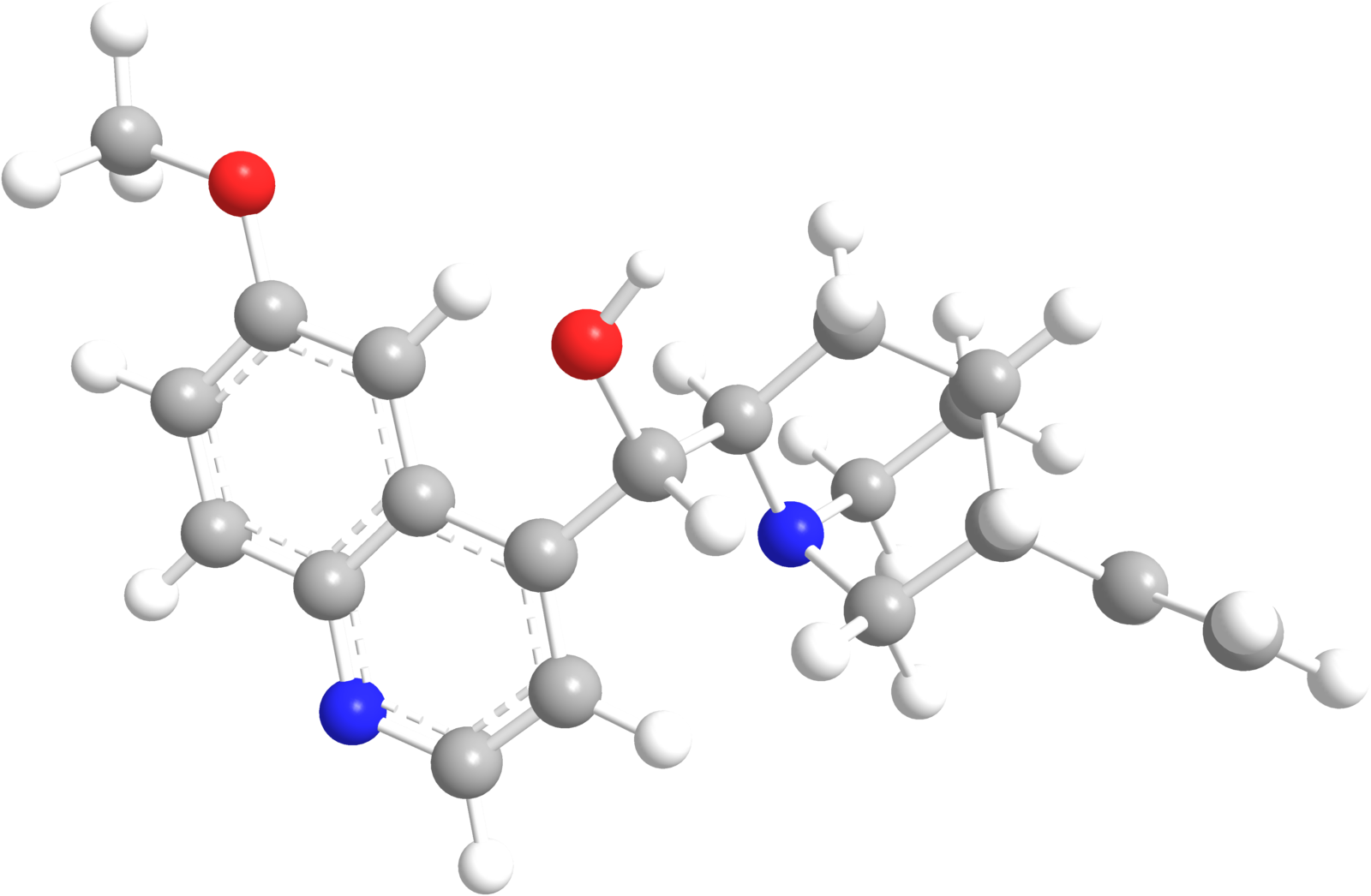Quinidine sulfate: Difference between revisions
No edit summary |
No edit summary |
||
| Line 70: | Line 70: | ||
:* If this regimen is well tolerated, if the serum quinidine level is still well within the laboratory’s therapeutic range, and if the average time between arrhythmic episodes has not been satisfactorily increased, then the dose may be cautiously raised. The total daily dosage should be reduced if the QRS complex widens to 130% of its pre-treatment duration; the QTc interval widens to 130% of its pre-treatment duration and is then longer than 500 ms; P waves disappear; or the patient develops significant tachycardia, symptomatic bradycardia, or hypotension. | :* If this regimen is well tolerated, if the serum quinidine level is still well within the laboratory’s therapeutic range, and if the average time between arrhythmic episodes has not been satisfactorily increased, then the dose may be cautiously raised. The total daily dosage should be reduced if the QRS complex widens to 130% of its pre-treatment duration; the QTc interval widens to 130% of its pre-treatment duration and is then longer than 500 ms; P waves disappear; or the patient develops significant tachycardia, symptomatic bradycardia, or hypotension. | ||
===== | =====Suppression of Ventricular Arrhythmias===== | ||
* Dosing | * Dosing regimens for the use of quinidine sulfate in suppressing life-threatening ventricular arrhythmias have not been adequately studied. Described regimens have generally been similar to the regimen described just above for the prophylaxis of symptomatic atrial fibrillation/flutter. Where possible, therapy should be guided by the results of programmed electrical stimulation and/or Holter monitoring with exercise. | ||
<!--Off-Label Use and Dosage (Adult)--> | <!--Off-Label Use and Dosage (Adult)--> | ||
Revision as of 18:05, 13 July 2014
Editor-In-Chief: C. Michael Gibson, M.S., M.D. [1]; Associate Editor(s)-in-Chief: Gerald Chi
Disclaimer
WikiDoc MAKES NO GUARANTEE OF VALIDITY. WikiDoc is not a professional health care provider, nor is it a suitable replacement for a licensed healthcare provider. WikiDoc is intended to be an educational tool, not a tool for any form of healthcare delivery. The educational content on WikiDoc drug pages is based upon the FDA package insert, National Library of Medicine content and practice guidelines / consensus statements. WikiDoc does not promote the administration of any medication or device that is not consistent with its labeling. Please read our full disclaimer here.
Black Box Warning
|
WARNINGS
See full prescribing information for complete Boxed Warning.
Mortality:
|
Overview
Quinidine sulfate is an antiarrhythmic that is FDA approved for the {{{indicationType}}} of symptomatic atrial fibrillation/flutter and life-threatening ventricular arrhythmias. There is a Black Box Warning for this drug as shown here. Common adverse reactions include chest pain, palpitations, rash, diarrhea, esophagitis, heartburn, nausea, vomiting, lightheadedness, visual disturbance, and fatigue.
Adult Indications and Dosage
FDA-Labeled Indications and Dosage (Adult)
Conversion of Atrial Fibrillation/Flutter to Sinus Rhythm
- Especially in patients with known structural heart disease or other risk factors for toxicity, initiation or dose-adjustment of treatment with quinidine sulfate should generally be performed in a setting where facilities and personnel for monitoring and resuscitation are continuously available. Patients with symptomatic atrial fibrillation/flutter should be treated with quinidine sulfate only after ventricular rate control (e.g., with digitalis or β-blockers) has failed to provide satisfactory control of symptoms. Adequate trials have not identified an optimal regimen of quinidine sulfate for conversion of atrial fibrillation/flutter to sinus rhythm.
- Dosing Information
- Therapy with quinidine sulfate should begin with one tablet (300 mg; 249 mg of quinidine base) every 8 to 12 hours.
- If this regimen is well tolerated, if the serum quinidine level is still well within the laboratory’s therapeutic range, and if this regimen has not resulted in conversion, then the dose may be cautiously raised. If, at any point during administration, the QRS complex widens to 130% of its pre-treatment duration; the QTc interval widens to 130% of its pre-treatment duration and is then longer than 500 ms; P waves disappear; or the patient develops significant tachycardia, symptomatic bradycardia, or hypotension, then quinidine sulfate is discontinued, and other means of conversion (e.g., direct-current cardioversion) are considered.
Reduction of Frequency of Relapse into Atrial Fibrillation/Flutter
- In a patient with a history of frequent symptomatic episodes of atrial fibrillation/flutter, the goal of therapy with quinidine sulfate should be an increase in the average time between episodes. In most patients, the tachyarrhythmia will recur during therapy with quinidine sulfate, and a single recurrence should not be interpreted as therapeutic failure.
- Especially in patients with known structural heart disease or other risk factors for toxicity, initiation or dose-adjustment of treatment with quinidine sulfate should generally be performed in a setting where facilities and personnel for monitoring and resuscitation are continuously available. Monitoring should be continued for two or three days after initiation of the regimen on which the patient will be discharged.
- Dosing Information
- Therapy with quinidine sulfate should begin with one tablet (300 mg; 249 mg of quinidine base) every eight to twelve hours.
- If this regimen is well tolerated, if the serum quinidine level is still well within the laboratory’s therapeutic range, and if the average time between arrhythmic episodes has not been satisfactorily increased, then the dose may be cautiously raised. The total daily dosage should be reduced if the QRS complex widens to 130% of its pre-treatment duration; the QTc interval widens to 130% of its pre-treatment duration and is then longer than 500 ms; P waves disappear; or the patient develops significant tachycardia, symptomatic bradycardia, or hypotension.
Suppression of Ventricular Arrhythmias
- Dosing regimens for the use of quinidine sulfate in suppressing life-threatening ventricular arrhythmias have not been adequately studied. Described regimens have generally been similar to the regimen described just above for the prophylaxis of symptomatic atrial fibrillation/flutter. Where possible, therapy should be guided by the results of programmed electrical stimulation and/or Holter monitoring with exercise.
Off-Label Use and Dosage (Adult)
Guideline-Supported Use
Condition1
- Developed by:
- Class of Recommendation:
- Strength of Evidence:
- Dosing Information
- Dosage
Condition2
There is limited information regarding Off-Label Guideline-Supported Use of Quinidine sulfate in adult patients.
Non–Guideline-Supported Use
Condition1
- Dosing Information
- Dosage
Condition2
There is limited information regarding Off-Label Non–Guideline-Supported Use of Quinidine sulfate in adult patients.
Pediatric Indications and Dosage
FDA-Labeled Indications and Dosage (Pediatric)
Condition1
- Dosing Information
- Dosage
Condition2
There is limited information regarding FDA-Labeled Use of Quinidine sulfate in pediatric patients.
Off-Label Use and Dosage (Pediatric)
Guideline-Supported Use
Condition1
- Developed by:
- Class of Recommendation:
- Strength of Evidence:
- Dosing Information
- Dosage
Condition2
There is limited information regarding Off-Label Guideline-Supported Use of Quinidine sulfate in pediatric patients.
Non–Guideline-Supported Use
Condition1
- Dosing Information
- Dosage
Condition2
There is limited information regarding Off-Label Non–Guideline-Supported Use of Quinidine sulfate in pediatric patients.
Contraindications
- Condition1
Warnings
|
WARNINGS
See full prescribing information for complete Boxed Warning.
Mortality:
|
- Description
Precautions
- Description
Adverse Reactions
Clinical Trials Experience
There is limited information regarding Clinical Trial Experience of Quinidine sulfate in the drug label.
Body as a Whole
Cardiovascular
Digestive
Endocrine
Hematologic and Lymphatic
Metabolic and Nutritional
Musculoskeletal
Neurologic
Respiratory
Skin and Hypersensitivy Reactions
Special Senses
Urogenital
Miscellaneous
Postmarketing Experience
There is limited information regarding Postmarketing Experience of Quinidine sulfate in the drug label.
Body as a Whole
Cardiovascular
Digestive
Endocrine
Hematologic and Lymphatic
Metabolic and Nutritional
Musculoskeletal
Neurologic
Respiratory
Skin and Hypersensitivy Reactions
Special Senses
Urogenital
Miscellaneous
Drug Interactions
- Drug
- Description
Use in Specific Populations
Pregnancy
- Pregnancy Category
- Australian Drug Evaluation Committee (ADEC) Pregnancy Category
There is no Australian Drug Evaluation Committee (ADEC) guidance on usage of Quinidine sulfate in women who are pregnant.
Labor and Delivery
There is no FDA guidance on use of Quinidine sulfate during labor and delivery.
Nursing Mothers
There is no FDA guidance on the use of Quinidine sulfate with respect to nursing mothers.
Pediatric Use
There is no FDA guidance on the use of Quinidine sulfate with respect to pediatric patients.
Geriatic Use
There is no FDA guidance on the use of Quinidine sulfate with respect to geriatric patients.
Gender
There is no FDA guidance on the use of Quinidine sulfate with respect to specific gender populations.
Race
There is no FDA guidance on the use of Quinidine sulfate with respect to specific racial populations.
Renal Impairment
There is no FDA guidance on the use of Quinidine sulfate in patients with renal impairment.
Hepatic Impairment
There is no FDA guidance on the use of Quinidine sulfate in patients with hepatic impairment.
Females of Reproductive Potential and Males
There is no FDA guidance on the use of Quinidine sulfate in women of reproductive potentials and males.
Immunocompromised Patients
There is no FDA guidance one the use of Quinidine sulfate in patients who are immunocompromised.
Administration and Monitoring
Administration
- Oral
- Intravenous
Monitoring
There is limited information regarding Monitoring of Quinidine sulfate in the drug label.
Condition1
- Description
IV Compatibility
There is limited information regarding IV Compatibility of Quinidine sulfate in the drug label.
Overdosage
Acute Overdose
Signs and Symptoms
- Description
Management
- Description
Chronic Overdose
There is limited information regarding Chronic Overdose of Quinidine sulfate in the drug label.
Pharmacology
Mechanism of Action
Structure
Pharmacodynamics
There is limited information regarding Pharmacodynamics of Quinidine sulfate in the drug label.
Pharmacokinetics
There is limited information regarding Pharmacokinetics of Quinidine sulfate in the drug label.
Nonclinical Toxicology
There is limited information regarding Nonclinical Toxicology of Quinidine sulfate in the drug label.
Clinical Studies
There is limited information regarding Clinical Studies of Quinidine sulfate in the drug label.
Condition1
- Description
How Supplied
Storage
There is limited information regarding Quinidine sulfate Storage in the drug label.
Images
Drug Images
{{#ask: Page Name::Quinidine sulfate |?Pill Name |?Drug Name |?Pill Ingred |?Pill Imprint |?Pill Dosage |?Pill Color |?Pill Shape |?Pill Size (mm) |?Pill Scoring |?NDC |?Drug Author |format=template |template=DrugPageImages |mainlabel=- |sort=Pill Name }}
Package and Label Display Panel
{{#ask: Label Page::Quinidine sulfate |?Label Name |format=template |template=DrugLabelImages |mainlabel=- |sort=Label Page }}
Patient Counseling Information
There is limited information regarding Patient Counseling Information of Quinidine sulfate in the drug label.
Precautions with Alcohol
- Alcohol-Quinidine sulfate interaction has not been established. Talk to your doctor about the effects of taking alcohol with this medication.
Brand Names
- ®[1]
Look-Alike Drug Names
- A® — B®[2]
Drug Shortage Status
Price
References
The contents of this FDA label are provided by the National Library of Medicine.
- ↑ Empty citation (help)
- ↑ "http://www.ismp.org". External link in
|title=(help)
{{#subobject:
|Page Name=Quinidine sulfate |Pill Name=No image.jpg |Drug Name= |Pill Ingred=|+sep=; |Pill Imprint= |Pill Dosage= |Pill Color=|+sep=; |Pill Shape= |Pill Size (mm)= |Pill Scoring= |Pill Image= |Drug Author= |NDC=
}}
{{#subobject:
|Label Page=Quinidine sulfate |Label Name=Quinidine sulfate03.png
}}
{{#subobject:
|Label Page=Quinidine sulfate |Label Name=Quinidine sulfate04.png
}}


